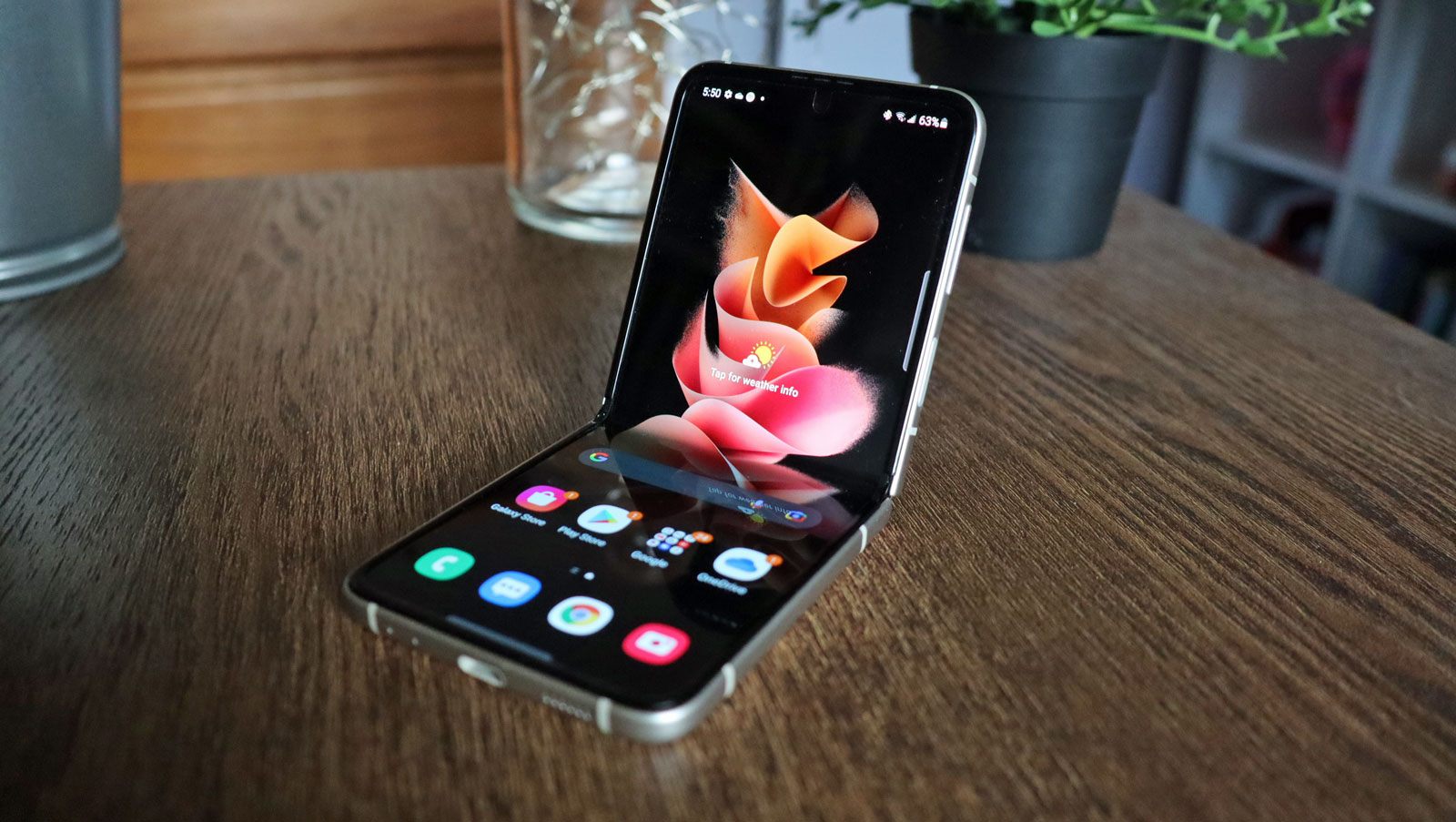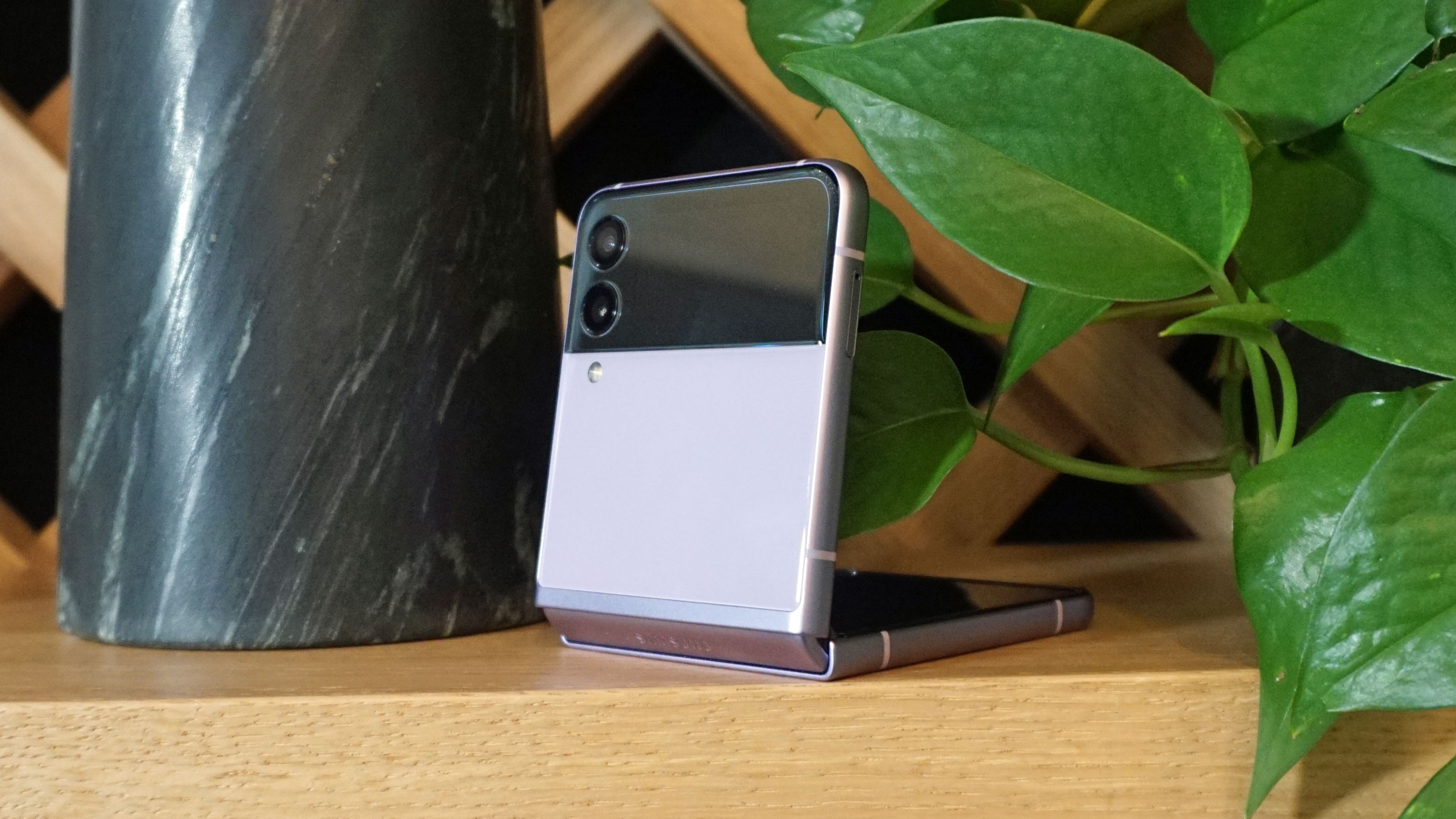6 things an iPhone Flip could do to beat the Samsung Galaxy Z Flip 3
Potentially a champion clamshell phone

The Samsung Galaxy Z Flip 3 currently ranks as our favorite clamshell foldable phone – partly through its own merits but partly from a lack of meaningful competition – however, if the rumored iPhone Flip comes along, Apple could snag Samsung's crown.
Apple only adopts new tech when it has something meaningful to contribute, so while Samsung has a head start in the foldable phone race, we're expecting big things from Apple's debut for the design.
When an iPhone Flip launches, it'll likely be a polished mobile with top features that make it a competitive handset – enough, perhaps, to rival other companies' offerings.
We haven't heard too much solid information about the device just yet, but if Apple is going to topple Samsung to get the 'best clamshell foldable' crown, there are a few things we'd like to see in the iPhone Flip.
1. A crease that isn't too obvious
One of our biggest gripes with the Samsung Galaxy Z Flip 3 – and all foldable phones from the brand – is the crease.
The crease is a natural part of foldable phones, as it's the area of the display which folds, and generally, there's a noticeable ridge in the screen there.
However, Samsung's foldables have creases that are far more pronounced than on rivals' equivalents, something you can easily notice while simply swiping your finger along the display – a task you're likely to be doing quite a bit on a smartphone.
Sign up for breaking news, reviews, opinion, top tech deals, and more.
This is something we've noted most when testing out other foldables, and it makes them far more enjoyable to use as a result. So if the iPhone Flip wants to provide a better user interface than Samsung's foldable, Apple needs to find a way to hide the crease better than Samsung does.

2. Three rear cameras
When smartphones have multiple rear cameras, they provide photographic versatility due to the different lenses each use – the iPhone 13 Pro has an ultra-wide, main and telephoto combo for a range of zoom options for example.
If the iPhone Flip gets the same cameras as the 13 Pro, it'd already beat the Galaxy Z Flip 3, which only has two. With its main and ultra-wide snappers, we found the Flip was fine for casual photography, but if you're dropping loads of money on a pricey flexer, you want more than 'fine.'
By including a strong array of rear cameras, Apple would ensure iPhone Flip was more versatile for photography than Samsung's.
3. A useful outer display
Every clamshell foldable phone we've seen has, in addition to the inner display, had a small outer display.
The function for this varies from phone to phone, but generally they're used for showing you notifications, music controls, the time, and your remaining battery.
Something we noted in our Galaxy Z Flip 3 review, though, was that this outer display still wasn't terribly useful. We used it from time to time, but it didn't cause us to change how we used the mobile – we still opened the handset up to check notifications or scroll through music apps looking for a new tune.
Samsung needs to add more functionality to this outer display, perhaps by making it big enough that it can legitimately be useful for complex functions, or maybe with a wider range of apps and widgets that make the most of it.

4. A long-lasting battery life
Another issue we found with the Galaxy Z Flip 3 – and the Motorola Razr, another clamshell foldable, for that matter – is that its battery life was rather unimpressive, and we had to charge it more than we'd like.
To an extent, this is understandable because the nature of a clamshell's small body means there isn't much space for a big battery. But there are other ways for a smartphone to have a long-lasting battery life.
In recent years, we've found Apple has improved its software optimization so that, even if its phones have smaller batteries, they last quite a long time between charges.
If it did the same for the iPhone Flip, we could see a mobile that easily lasted a full day of use, which would make it better in the battery department than Samsung's equivalent.
5. A wider array of folded features
A few clamshell foldable phones we've seen feature special modes or tools that only work when the device is half-closed.
A good example of this is in clamshell phones – you can have the device open at a right angle, and while one side rests on a surface, the other is pointed up – this can be used as a handy way to take photographs if you need a stable surface.
The range of flex features in foldables we've seen is quite limited though, and they largely focus on uses for the front and rear cameras while at various stages of folding.
If Apple came up with extra things we could do while the device was flexing, it would provide useful features not available to users of the Samsung phone, and it could give it the edge.

6. MagSafe compatibility
Now this is a feature that Apple could introduce to its iPhone Flip that Samsung would have no answer for.
MagSafe is Apple's magnetic feature for smartphones, so you can clip on extras like wireless chargers, cases, wallets and more, and other than Realme, no company has introduced equivalents for their own devices.
Rumors suggest Apple is looking to expand MagSafe to more products like iPads, too, so it seems like the company is building its ecosystem of magnetic products.
MagSafe for iPhone Flip could let you utilize all the features it brings to other tech, but perhaps more. We could see stands that use the feature, as the iPhone Flip will likely be rather lightweight, or cases that are held to the device by magnets instead of hugging tight to its form – a solution that doesn't always work well for phones with moving parts.
Unless Samsung were to create a MagSafe rival – something which we don't see happening any time soon – this would be a useful extra feature that could give the iPhone Flip the edge.

Tom Bedford joined TechRadar in early 2019 as a staff writer, and left the team as deputy phones editor in late 2022 to work for entertainment site (and TR sister-site) What To Watch. He continues to contribute on a freelance basis for several sections including phones, audio and fitness.